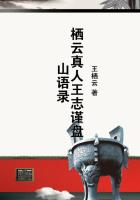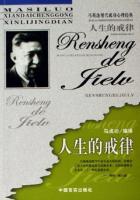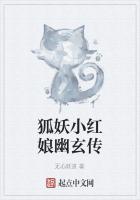THEOPHIL ESHLEY was an artist by profession, a cattle painter by force of environment. It is not to be supposed that he lived on a ranche or a dairy farm, in an atmosphere pervaded with horn and hoof, milking-stool, and branding-iron. His home was in a park-like, villa-dotted district that only just escaped the reproach of being suburban. On one side of his garden there abutted a small, picturesque meadow, in which an enterprising neighbour pastured some small picturesque cows of the Channel Island persuasion. At noonday in summertime the cows stood knee-deep in tall meadow-grass under the shade of a group of walnut trees, with the sunlight falling in dappled patches on their mouse-sleek coats. Eshley had conceived and executed a dainty picture of two reposeful milch-cows in a setting of walnut tree and meadow-grass and filtered sunbeam, and the Royal Academy had duly exposed the same on the walls of its Summer Exhibition.
The Royal Academy encourages orderly, methodical habits in its children. Eshley had painted a successful and acceptable picture of cattle drowsing picturesquely under walnut trees, and as he had begun, so, of necessity, he went on. His "Noontide Peace," a study of two dun cows under a walnut tree, was followed by "A Mid-day Sanctuary," a study of a walnut tree, with two dun cows under it. In due succession there came "Where the Gad-Flies Cease from Troubling," "The Haven of the Herd," and "A-dream in Dairyland," studies of walnut trees and dun cows. His two attempts to break away from his own tradition were signal failures: "Turtle Doves alarmed by Sparrow-hawk" and "Wolves on the Roman Campagna" came back to his studio in the guise of abominable heresies, and Eshley climbed back into grace and the public gaze with "A Shaded Nook where Drowsy Milkers Dream."On a fine afternoon in late autumn he was putting some finishing touches to a study of meadow weeds when his neighbour, Adela Pingsford, assailed the outer door of his studio with loud peremptory knockings.
"There is an ox in my garden," she announced, in explanation of the tempestuous intrusion.
"An ox," said Eshley blankly, and rather fatuously;"what kind of ox?"
"Oh, I don't know what kind," snapped the lady. "Acommon or garden ox, to use the slang expression. It is the garden part of it that I object to. My garden has just been put straight for the winter, and an ox roaming about in it won't improve matters. Besides, there are the chrysanthemums just coming into flower.""How did it get into the garden?" asked Eshley.
"I imagine it came in by the gate," said the lady impatiently; "it couldn't have climbed the walls, and Idon't suppose anyone dropped it from an aeroplane as a Bovril advertisement. The immediately important question is not how it got in, but how to get it out.""Won't it go?" said Eshley.
"If it was anxious to go," said Adela Pingsford rather angrily, "I should not have come here to chat with you about it. I'm practically all alone; the housemaid is having her afternoon out and the cook is lying down with an attack of neuralgia. Anything that I may have learned at school or in after life about how to remove a large ox from a small garden seems to have escaped from my memory now. All I could think of was that you were a near neighbour and a cattle painter, presumably more or less familiar with the subjects that you painted, and that you might be of some slight assistance. Possibly Iwas mistaken."
"I paint dairy cows, certainly," admitted Eshley, "but I cannot claim to have had any experience in rounding-up stray oxen. I've seen it done on a cinema film, of course, but there were always horses and lots of other accessories; besides, one never knows how much of those pictures are faked."Adela Pingsford said nothing, but led the way to her garden. It was normally a fair-sized garden, but it looked small in comparison with the ox, a huge mottled brute, dull red about the head and shoulders, passing to dirty white on the flanks and hind-quarters, with shaggy ears and large blood-shot eyes. It bore about as much resemblance to the dainty paddock heifers that Eshley was accustomed to paint as the chief of a Kurdish nomad clan would to a Japanese tea-shop girl. Eshley stood very near the gate while he studied the animal's appearance and demeanour. Adela Pingsford continued to say nothing.
"It's eating a chrysanthemum," said Eshley at last, when the silence had become unbearable.
"How observant you are," said Adela bitterly. "You seem to notice everything. As a matter of fact, it has got six chrysanthemums in its mouth at the present moment."The necessity for doing something was becoming imperative. Eshley took a step or two in the direction of the animal, clapped his hands, and made noises of the "Hish" and "Shoo" variety. If the ox heard them it gave no outward indication of the fact.















